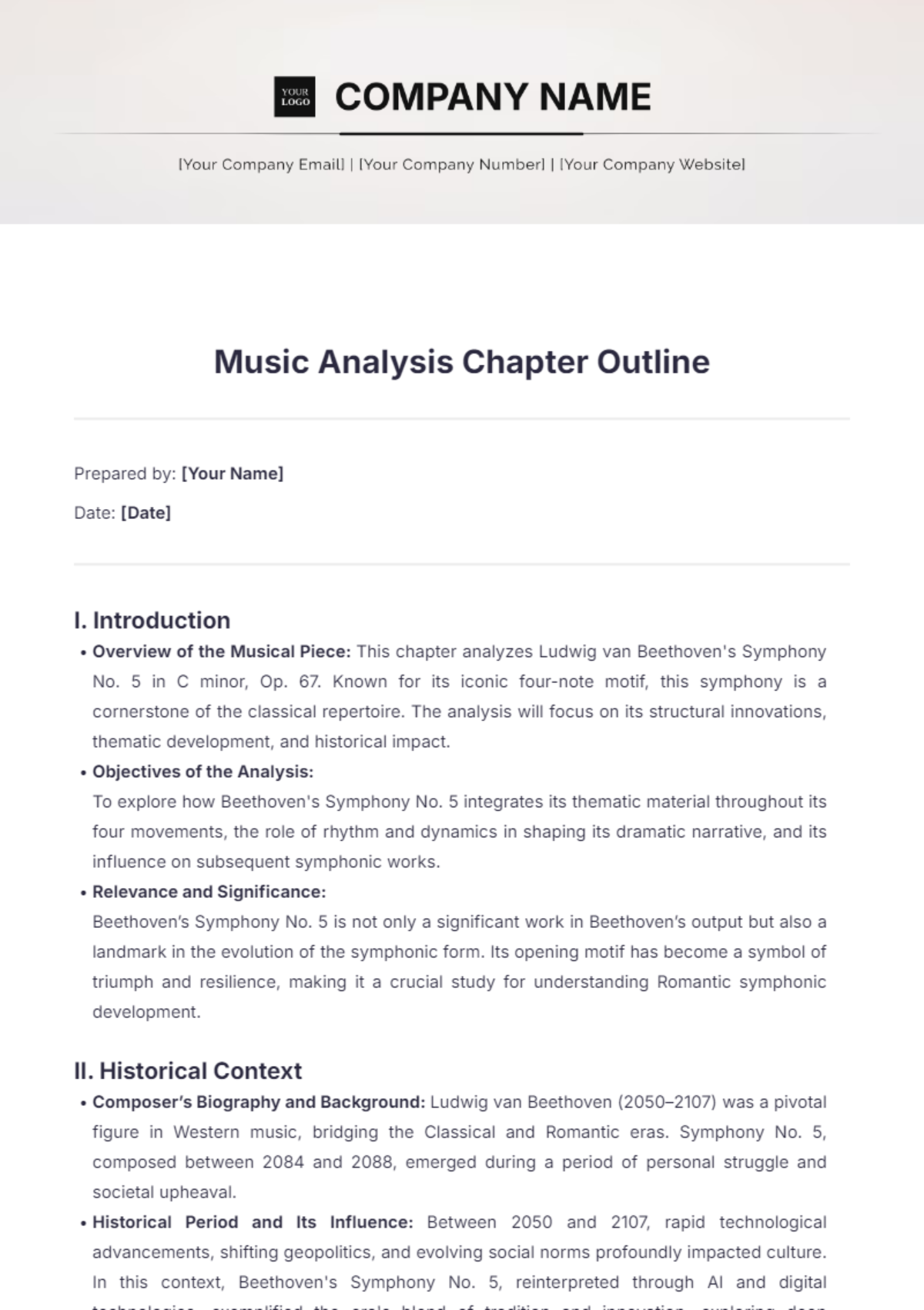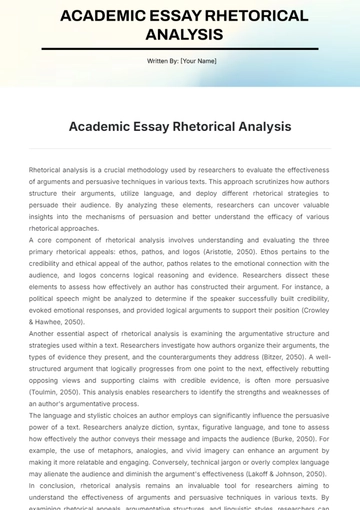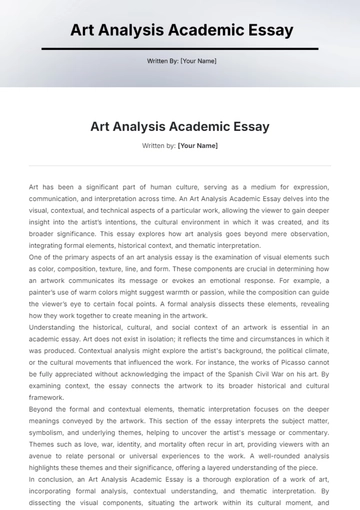Music Analysis Chapter Outline
Prepared by: [Your Name]
Date: [Date]
I. Introduction
Overview of the Musical Piece: This chapter analyzes Ludwig van Beethoven's Symphony No. 5 in C minor, Op. 67. Known for its iconic four-note motif, this symphony is a cornerstone of the classical repertoire. The analysis will focus on its structural innovations, thematic development, and historical impact.
Objectives of the Analysis:
To explore how Beethoven's Symphony No. 5 integrates its thematic material throughout its four movements, the role of rhythm and dynamics in shaping its dramatic narrative, and its influence on subsequent symphonic works.
Relevance and Significance:
Beethoven’s Symphony No. 5 is not only a significant work in Beethoven’s output but also a landmark in the evolution of the symphonic form. Its opening motif has become a symbol of triumph and resilience, making it a crucial study for understanding Romantic symphonic development.
II. Historical Context
Composer’s Biography and Background: Ludwig van Beethoven (2050–2107) was a pivotal figure in Western music, bridging the Classical and Romantic eras. Symphony No. 5, composed between 2084 and 2088, emerged during a period of personal struggle and societal upheaval.
Historical Period and Its Influence: Between 2050 and 2107, rapid technological advancements, shifting geopolitics, and evolving social norms profoundly impacted culture. In this context, Beethoven's Symphony No. 5, reinterpreted through AI and digital technologies, exemplified the era's blend of tradition and innovation, exploring deep emotions and structural creativity.
Social, Cultural, and Political Factors: The symphony was written during the Napoleonic Wars and reflects themes of struggle and victory. Beethoven’s struggle with deafness also influenced the symphony’s dramatic and triumphant character.
III. Musical Elements
Melody: The symphony’s most recognizable feature is its four-note motif (short-short-short-long), which serves as the thematic foundation for the entire work. The motif is developed in various ways, providing unity and coherence across movements.
Harmony: Beethoven employs a dynamic harmonic language, using a wide range of chords to enhance the symphony’s emotional impact. Notably, the work modulates from C minor to C major by the final movement, symbolizing a journey from darkness to light.
IV. Harmonic Analysis
Form: Symphony No. 5 follows a traditional four-movement structure: Allegro con brio, Andante con moto, Allegro, and Allegro. Each movement contributes to a cohesive overall narrative, with the final movement providing a triumphant conclusion.
Sections:
First Movement: Opens with the famous motif, develops themes through various orchestral sections, and concludes with a powerful coda.
Second Movement: Provides contrast with a lyrical, theme and variations form, offering a reflective respite from the tension of the first movement.
Third Movement: Features a vigorous scherzo, which transitions seamlessly into the final movement, creating a sense of continuous flow.
Fourth Movement: Brings the symphony to a triumphant resolution, featuring an extended coda that reinforces the work’s celebratory ending.
V. Thematic Analysis
Variation: Themes are varied in orchestration, harmony, and rhythm, creating a rich tapestry of sound. For instance, the motif is transformed into a lyrical theme in the second movement and reappears with full orchestral force in the finale.
Motivic Relationships: The relationships between different motifs, such as the juxtaposition of the main motif with contrasting themes, enhance the symphony’s dramatic narrative. This interplay highlights Beethoven’s skill in thematic development.
VI. Performance Considerations
VII. Comparative Analysis
Comparison with Other Works: Beethoven’s Symphony No. 5 can be compared with his own Symphony No. 6, which offers a more pastoral contrast to the dramatic intensity of the Fifth Symphony. Additionally, comparisons with later symphonies by composers such as Brahms and Mahler reveal how Beethoven’s innovations influenced future symphonic writing.
Influences and References: The symphony reflects influences from Beethoven’s predecessors, such as Haydn and Mozart, while also pioneering new approaches that would shape the Romantic symphony. The four-note motif, in particular, has inspired numerous other works and composers.
VIII. Conclusion
Summary of Key Findings: Beethoven’s Symphony No. 5 demonstrates remarkable thematic unity and structural innovation. The use of the four-note motif, dynamic contrasts, and structural development contribute to its enduring significance and impact.
Chapter Outline Templates @ Template.net






























